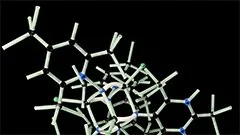Introduction
The plasma membrane, also known as the cell membrane or cytoplasmic membrane, is a vital component of all cells in living organisms. This biophysical structure separates the interior of the cell from its external environment and maintains the homeostasis necessary for life. The plasma membrane plays pivotal roles in several fundamental cellular processes, including solute transport, signal transduction, cell-cell recognition, and cell growth and division.
Historical Background
The concept of a distinct cell membrane was first proposed by Theodor Schwann in the mid-19th century, based on his observations of tissue samples using microscopy. The structure and composition of the plasma membrane were further elucidated through electron microscopy, biochemical analyses, and various experimental techniques developed over the course of the 20th century.
Basic Structure of the Plasma Membrane
The plasma membrane is a bilayer of phospholipids, primarily composed of a hydrophilic head and a hydrophobic tail. The non-polar tails avoid contact with water, while the polar heads are in constant interaction with the aqueous environment inside and outside the cell. Embedded within this lipid bilayer are various proteins, which serve diverse functions related to transport, signaling, and cell adhesion.
Lipids in the Plasma Membrane
The primary lipids found in the plasma membrane are phospholipids, with smaller amounts of sterols (cholesterol in animals) and glycolipids. The hydrophilic head of a phospholipid molecule consists of a polar phosphate group and a charged hydrophilic moiety, such as amino alcohols or carboxylic acids. The non-polar tails, consisting mainly of fatty acid chains, are hydrophobic in nature.
Proteins in the Plasma Membrane
Proteins in the plasma membrane can be classified into three main categories: integral proteins, peripheral proteins, and lipid-anchored proteins.
- Integral proteins span the entire thickness of the bilayer, with one or both ends exposed to the aqueous environment inside or outside the cell. These proteins can be further classified as transmembrane proteins (with at least one hydrophobic segment that spans the bilayer) or peripheral membrane proteins (attached to the lipid bilayer via non-covalent interactions).
- Peripheral proteins are not embedded in the lipid bilayer but interact with integral proteins, lipids, or other peripheral proteins at the surface of the plasma membrane. They can be anchored through various mechanisms such as ionic bonds, hydrogen bonding, van der Waals forces, or covalent modifications (e.g., glycosylation).
- Lipid-anchored proteins are attached to the lipid bilayer via a lipophilic anchor group, allowing them to be integrated into the membrane without spanning its entire thickness.
Function of the Plasma Membrane in Solute Transport
The plasma membrane serves as a selective barrier for solutes, controlling the movement of ions, nutrients, and metabolic products across the cell boundary. This is accomplished through various transport mechanisms: passive diffusion, facilitated diffusion, and active transport.
- Passive Diffusion
- Simple diffusion (Fick's law) involves the spontaneous movement of molecules down their concentration gradient from an area of higher concentration to an area of lower concentration.
- Facilitated Diffusion
- Transport proteins facilitate the movement of specific solutes across the membrane by binding and releasing them in response to concentration gradients, although not directly requiring energy (ATP).
- Active Transport
- Primary active transport uses ATP hydrolysis to drive the movement of solutes against their concentration gradient, while secondary active transport utilizes the electrochemical gradient generated by primary active transport systems.
Signal Transduction and Cell Recognition
The plasma membrane is also the site for signal transduction pathways, which allow cells to respond to external stimuli and regulate various cellular processes. These pathways involve the activation of receptor proteins at the cell surface, leading to intracellular signaling cascades that ultimately modulate gene expression, enzyme activity, or ion channel conductance.
In addition, the plasma membrane plays a crucial role in cell-cell recognition, enabling proper organization and communication between cells within tissues and organs. This is achieved through specialized proteins known as cell adhesion molecules (CAMs) that mediate interactions between neighboring cells or the extracellular matrix.
Conclusion
The plasma membrane is a fundamental structure that maintains the integrity of cells, regulates solute transport, facilitates signal transduction, and promotes cell-cell recognition. A thorough understanding of the structure and function of this complex biomembrane is essential for comprehending various aspects of cellular biology.
MCQ: Test your knowledge!
Do you think you know everything about this course? Don't fall into the traps, train with MCQs! eBiologie has hundreds of questions to help you master this subject.
To go further...
These courses might interest you
Create a free account to receive courses, MCQs, and advice to succeed in your studies!
eBiologie offers several eBooks containing MCQ series (5 booklets available free for each subscriber).








